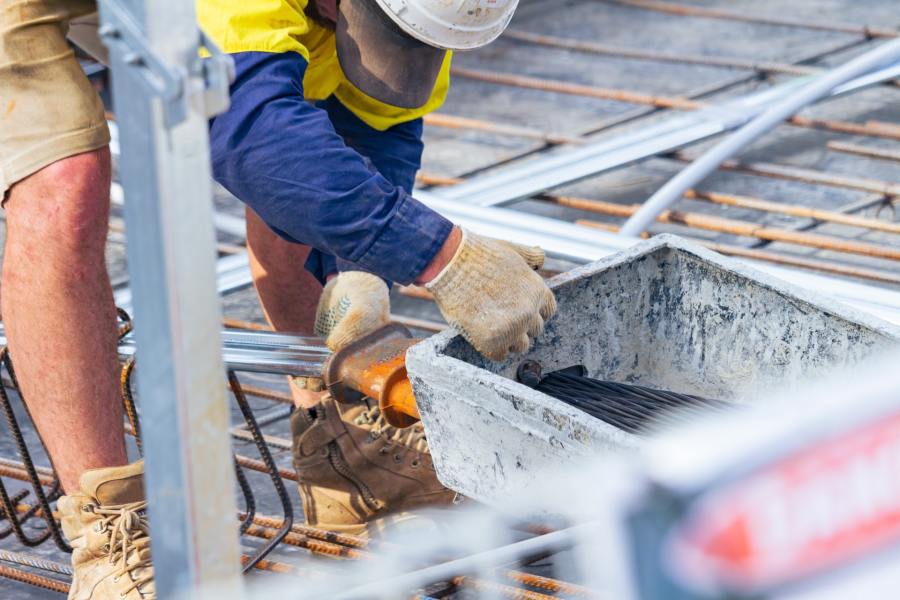The recent decision in Goodwin Street Developments Pty Ltd atf Jesmond Unit Trust v DSD Builders Pty Ltd (in liq) [2022] NSWSC 624 is the first-ever decision of the Supreme Court of NSW on the application of the statutory duty of care in section 37 of the Design and Building Practitioners Act 2020 (NSW) (DBP Act). It establishes that the duty of care has a much broader application than only to "class 2" buildings.
A summary of this decision and its impacts for building practitioners are outlined below.
Background
Many within the legal and construction industries understood that the reforms introduced by the DBP Act and the Design & Building Practitioners Regulation (Regulation), including the statutory duty of care, only had current application to class 2 buildings (such as multi-residential apartment buildings) or buildings with a class 2 part. This understanding was informed by the NSW Government's previous indication that this was the case.
The legislation, however, suggested that the statutory duty of care might have a broader application. The NSW Supreme Court has now confirmed that this is indeed the case.
While the scope of the DBP Act is defined in section 4 of the Act and section 12 of the Regulation, which refers to class 2 buildings only, crucially the scope of the statutory duty of care is separately defined elsewhere in the DBP Act. This forms the basis of the Court's reasoning.
Scope of the statutory duty of care
A separate set of definitions found in section 36 apply to Part 4 of the DBP Act, which introduces the statutory duty of care.
The duty of care is found in section 37(1) of the DBP Act, which reads:
"A person who carries out construction work has a duty to exercise reasonable care to avoid economic loss caused by defects:
(a) in or related to a building for which the work is done, and
(b) arising from the construction work." (our emphasis)
"Construction work" and "building" are defined in section 36(1) of the DBP Act by reference to other Acts, a drafting technique which Justice Stevenson commented "renders construction of the section fiendishly difficult".
Specifically,
-
The definition of "building" reads: "building has the same meaning as it has in the Environmental Planning and Assessment Act 1979" (EPAA). In the EPAA, "building includes part of a building, and also includes any structure or part of a structure (including any temporary structure or part of a temporary structure), but does not include a manufactured home, moveable dwelling or associated structure..."
-
"Construction work" is defined to include "building work", the definition of which reads: "building work includes residential building work within the meaning of the Home Building Act 1989" (HBA). "Residential building work" under the HBA means any work involved in the construction of a "dwelling", which is defined as "a building or portion of a building that is designed, constructed or adapted for use as a residence".
Case summary
The plaintiff, Goodwin Street Developments Pty Ltd is the owner of land in Jesmond, New South Wales. On 10 July 2017, the plaintiff entered into a building contract with the first defendant, DSD Builders Pty Ltd to construct three residential boarding houses, intended for university student accommodation, on the site.
The plaintiff alleged that the first defendant negotiated the building contract and carried out the construction work on the site. The second defendant, Mr Daniel Roberts was a representative of the first defendant and named as a defendant in his personal capacity. Mr Roberts was said to have supervised the construction works on the site on behalf of DSD Builders.
Several disputes arose on the project relating to late payment, defective works, and general delays. Subsequently, works were suspended on the site. During this time there was malicious damage to the works, including removed materials, fixtures and fittings. The plaintiff terminated the building contract and commenced this proceeding against the first defendant and second defendant for trespass, damage, and breach of the statutory duty of care in section 37 of the DBP Act. The plaintiff alleged that the second defendant carried out "construction work" within the meaning of section 37 and acted in breach of his duty to exercise reasonable care to avoid economic loss caused by defects in the building arising from the construction work.
There was no dispute that the work was defective. The issue to be determined was whether Mr Roberts carried out construction works and breached his statutory duty of care in the DBP Act to Goodwin Street Developments.
Counsel for Mr Roberts submitted that the statutory duty of care in section 37 does not extend to "construction work" carried out on a boarding house. His Honour disagreed.
Supreme Court decision
Justice Stevenson held that:
- the definition of "building work" in section 4(1) of the DBP Act (which refers to only class 2 buildings) has no application to Part 4 including section 37
- by reason of the operation of section 36(2) of the DBP Act and the definition of "building" in section 36(1), the statutory duty of care in section 37 applies to "building work" and therefore "construction work" in relation to a boarding house
- it does not matter that a boarding house is not a "dwelling" within the meaning of the HBA and thus that construction of a boarding house is not "residential building work" for the purposes of the HBA; and
- the second defendant did carry out “construction work” for the purposes of section 36 of the DBP Act in performing project management and supervision of the construction works at the site.
Justice Stevenson found that Mr Roberts had acted in breach of his statutory duty of care in section 37. Mr Roberts was found liable to pay the plaintiff's costs of making good the damage and rectifying the defects.
Key takeaways for design and building practitioners and their insurers
The statutory duty of care in section 37 of the DBP Act is not limited to class 2 buildings, and is perhaps not even limited to residential building works under the HBA. The logic set out in the judgment suggests the duty applies in relation to any building work being undertaken, as long as it is to a "building" as defined in the EPAA. The EPAA definition of "building" is broad and vague.
The vast bulk of the statutory duty of care claims we have seen to date relate to multi-residential class 2 building projects, with the remainder relating to class 1 and 3 buildings (i.e. other residential buildings).
This decision will almost certainly lead to the statutory duty of care being pleaded by a broader range of claimants in relation to a broader range of buildings.
Builders, designers, building consultants and their insurers may have greater exposure to claims relying on the statutory duty of care. This decision also confirms that building practitioners can be found personally liable for damages under section 37.
For more information on how this decision may apply to your business, please contact a member of our team.
Photo by Abdul Zreika on Unsplash
All information on this site is of a general nature only and is not intended to be relied upon as, nor to be a substitute for, specific legal professional advice. No responsibility for the loss occasioned to any person acting on or refraining from action as a result of any material published can be accepted. Lander & Rogers is furthermore committed to providing legal advice and content that is factual, true, practical and understandable. Learn more about our editorial policy.
 Client portal
Client portal












